Commissioned by Seoul Metropolitan Government
Permanent Media Sculpture at DMC, Seoul Korea
Sky meets Earth; past confronts future;
Human encounters media
THEY aims to express humanism by imbuing a Korean sensibility into digital media. The woman gazing towards the sky and the man gazing towards the ground symbolize the desires of humans who seek harmony between "yin" and "yang." In the artwork, the woman looks up at the "heaven" represented by "yang," while the man gazes at the "earth" represented by "yin." By incorporating the elements of the triangle composition, representing the heavens, earth, and humanity, the desire to find an ideal partner in each other's dreams and to achieve harmony and vitality is perhaps an expression of the most primitive and purest human aspiration.
However, it goes beyond the simple representation of the past "analog" human form and attempts to achieve a new harmony in public art called "analog + digital" by employing a strong sense of digital media. In particular, by using our traditional "color theory" of red, white, yellow, black, and blue in digital media, it aims to imbue a "Korean sensibility." Traditionally, red (fire) represents the south, white (metal) represents the west, black (water) represents the north, yellow (earth) represents the center, and blue (wood) represents the east. It is said that women carefully collect scraps of various colors of silk from sewing and use them to make a coat for the baby's first birthday. In this artwork, the artist, contrary to common sense, dresses the "cold analog" male and female sculptures with "warm digital" attire, similar to how Korean mothers lovingly make clothes for their babies stitch by stitch.
However, the "five directions" symbolized by these five colors present a hopeful vision of the "future" of Korea's digital media industry, which will extend widely from DMC, the mecca of Korean digital media. The combination of "man + woman" and "analog + digital" in the artwork has become a perfect harmony, representing the "giant unified humanity." Therefore, what it pursues is not simply "love" between men and women but the universal value of "humanity."
However, these two entities are not facing each other.
It subtly questions what issues humans currently living should reflect upon.
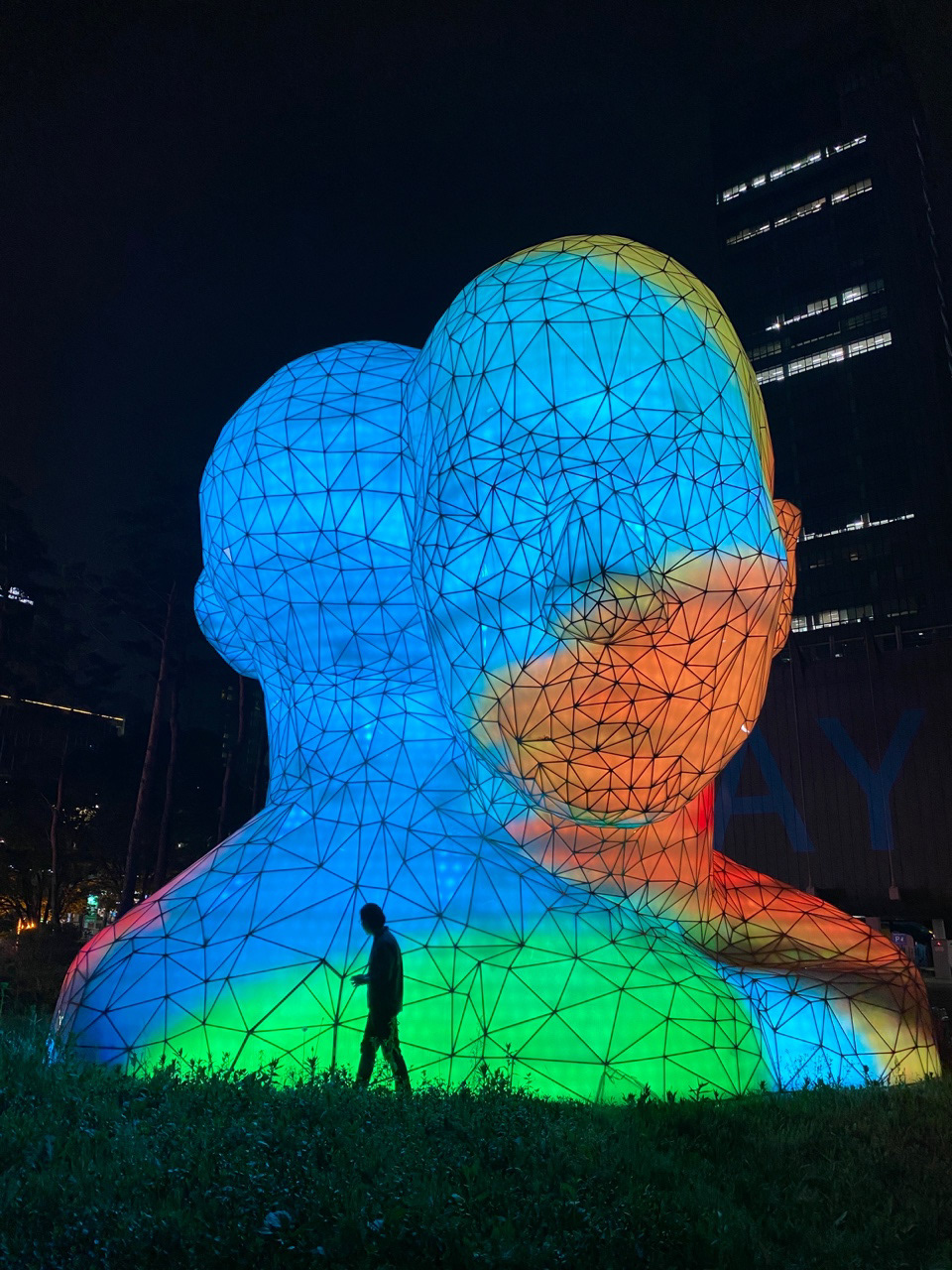
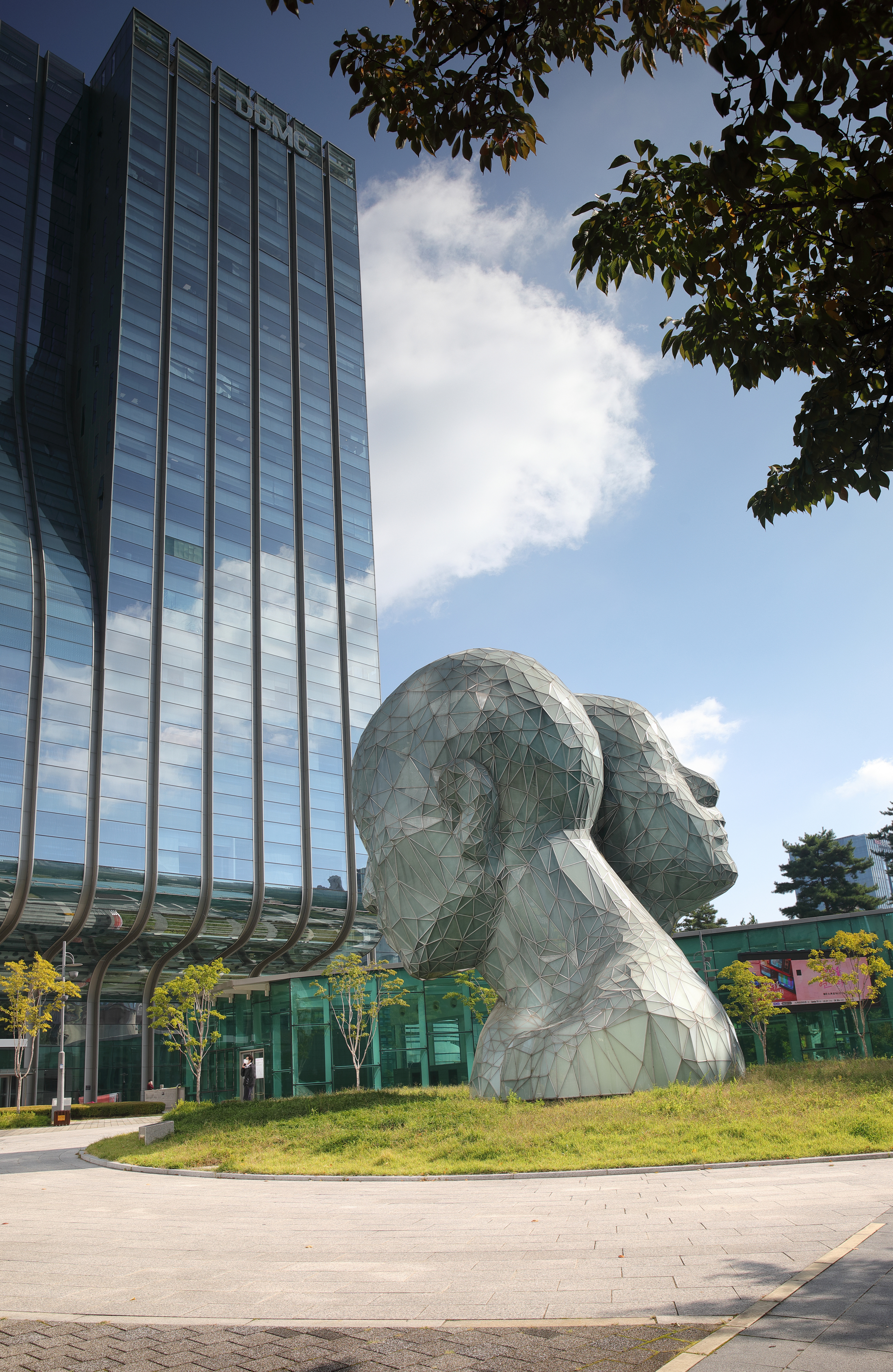

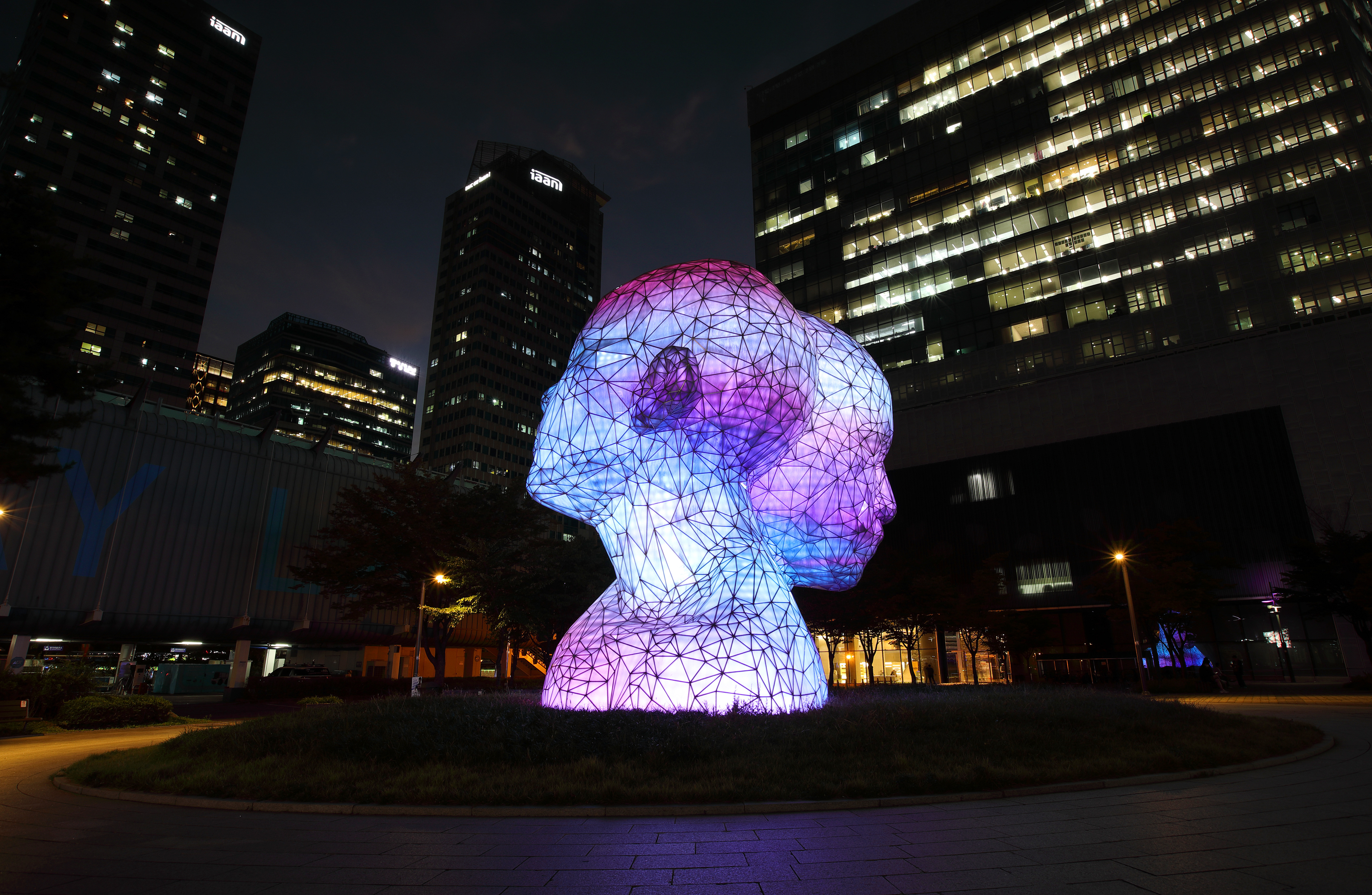

Artist Essay
Despite the ambitious desires of a young artist to create an unprecedented media artwork on a global scale, many people actively supported and helped us get this far. From the initial conceptual stage, as an artist, I went through numerous trials and errors, too many to list, in order to actually realize what I wanted to express. However, all of those experiences have now become our assets, giving us confidence.
In working on this public sculpture, the following aspects received the most attention. First of all, I felt a sense of obligation to create something that could become part of humanity's cultural heritage since it would permanently remain in a public space. As an artist who initially studied sculpture, I feel a sense of pride, as I finally see some fruitful results. To ensure that the three-dimensional artistic quality of the sculpture is maintained from all angles, especially since it is placed in a park square that serves as a resting place for citizens, I made efforts to handle the figurative form of the human body while eliminating the concept of a frontal view and maintaining a sense of balance from a 360-degree perspective. Particularly because it is located in a downtown area surrounded by tall buildings, I simulated and modified it countless times to ensure that people working there can appreciate its aesthetic beauty.
The second aspect I paid the most attention was the artwork's variation between day and night. Traditional sculptures, unlike media artworks, are often not easily visible at night. While lighting can be used, I haven't experienced being moved by a simple lighting effect in front of an artwork at night. On the other hand, media-based sculptures that utilize light have remarkable effects and become landmarks at night. However, in many cases, such sculptures paradoxically lose their artistic value and appear as indistinguishable masses during the daytime. Therefore, I devoted myself to maintaining the sculptural structure and maximizing the aesthetic effect even without using light in broad daylight. Especially in expressing the reflection angles of glass and the construction beauty of frames between the glass, I extended the period of modification for about three months.
Lastly, I want to mention once again that all of this could never have been accomplished by the artist alone. Living in Japan, I frequently witness that many people engaged in Japanese art world was envy of the fact that Nam June Paik was Korean. I wanted to show once again that the descendants of Nam June Paik, the father of media art, are alive and well here. I express my gratitude to the Seoul Metropolitan Government, LG Telecom, ServeOne, Studio Sungshin, and InbitLED, and everyone who are involved. Despite the extraordinary climate of a century-long snowfall, I will never forget the meticulous work they repeatedly carried out.
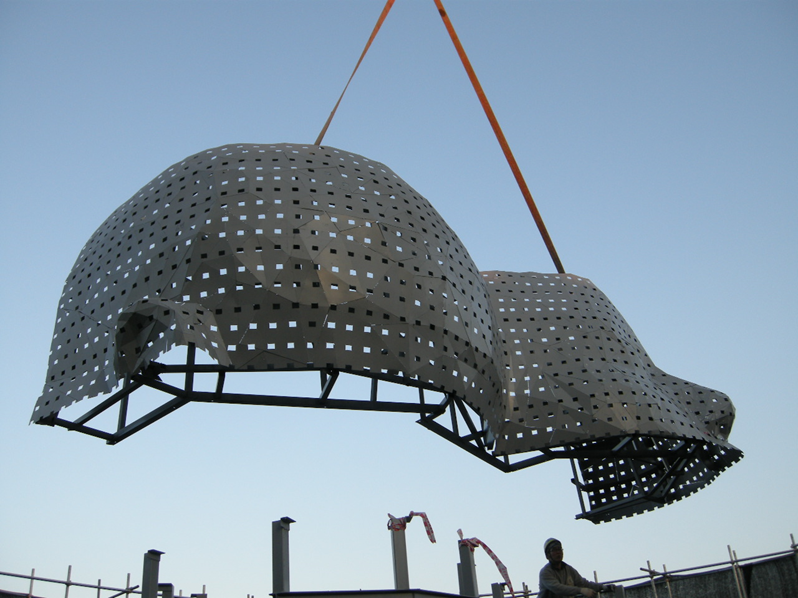
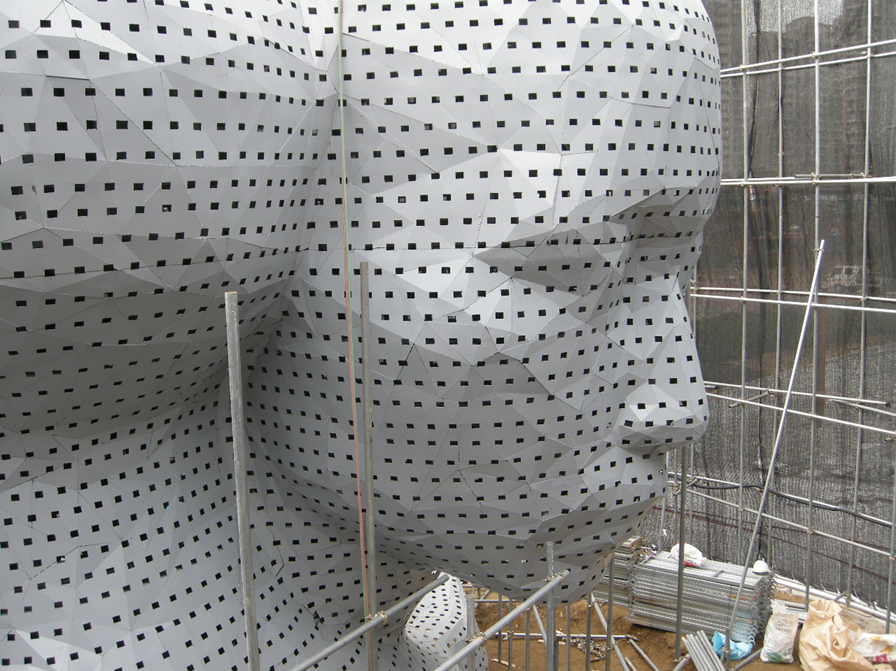

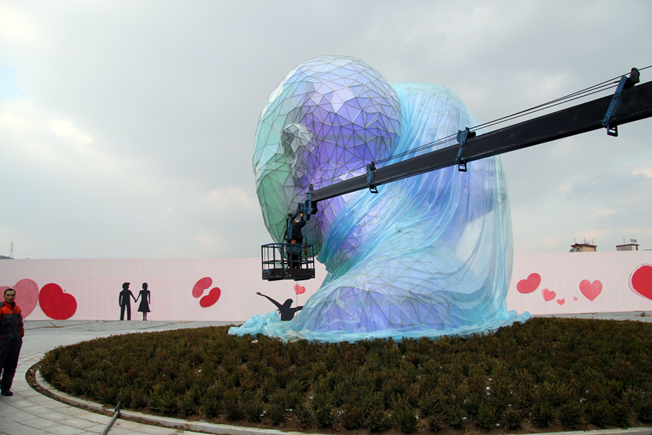
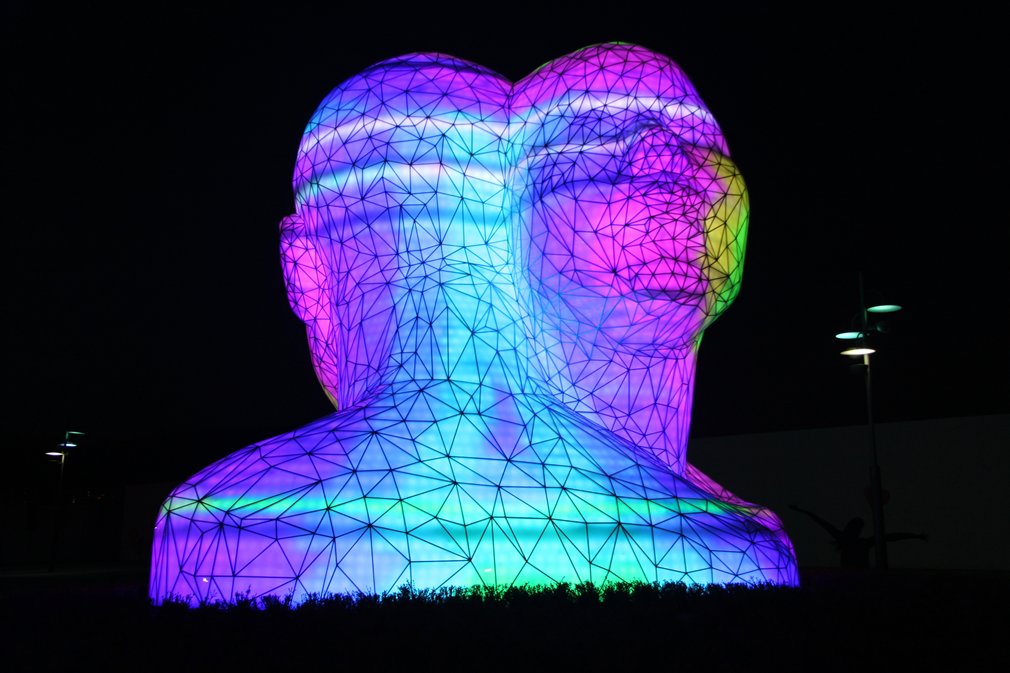
Support & Public Collection
Seoul Metropolitan Government
Award
Grand prize in monument to the Digital Media City Seoul, LG, Seoul, Korea
